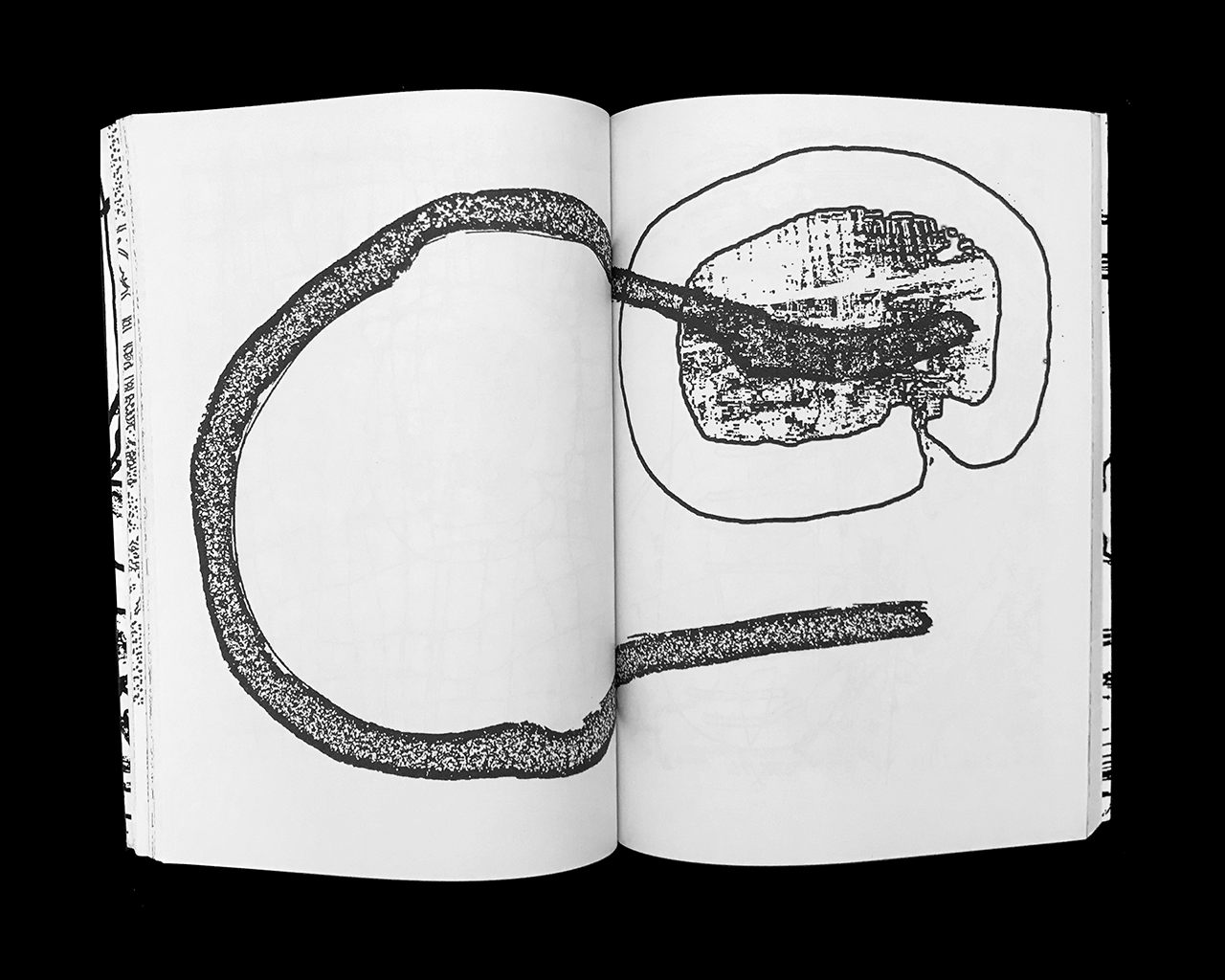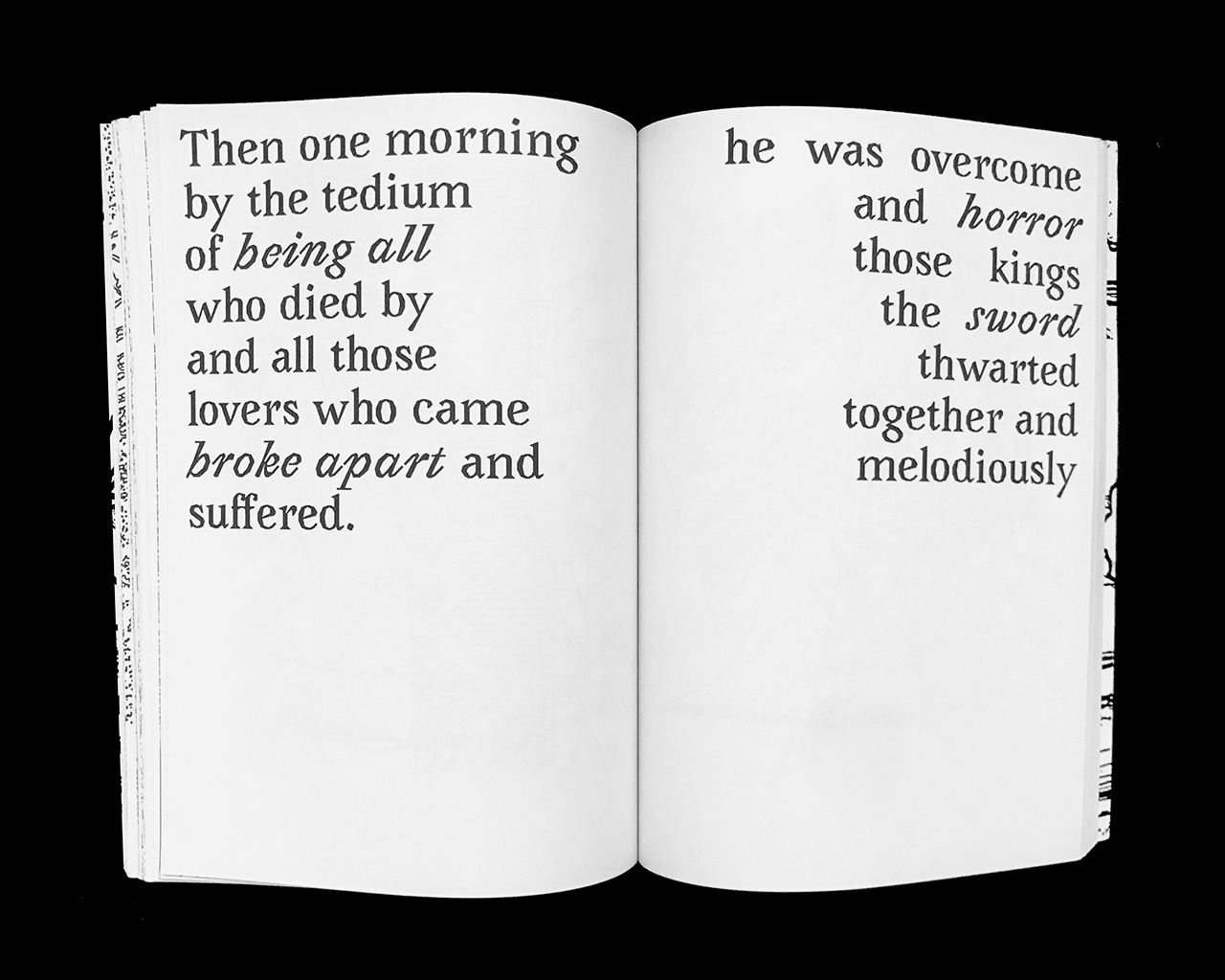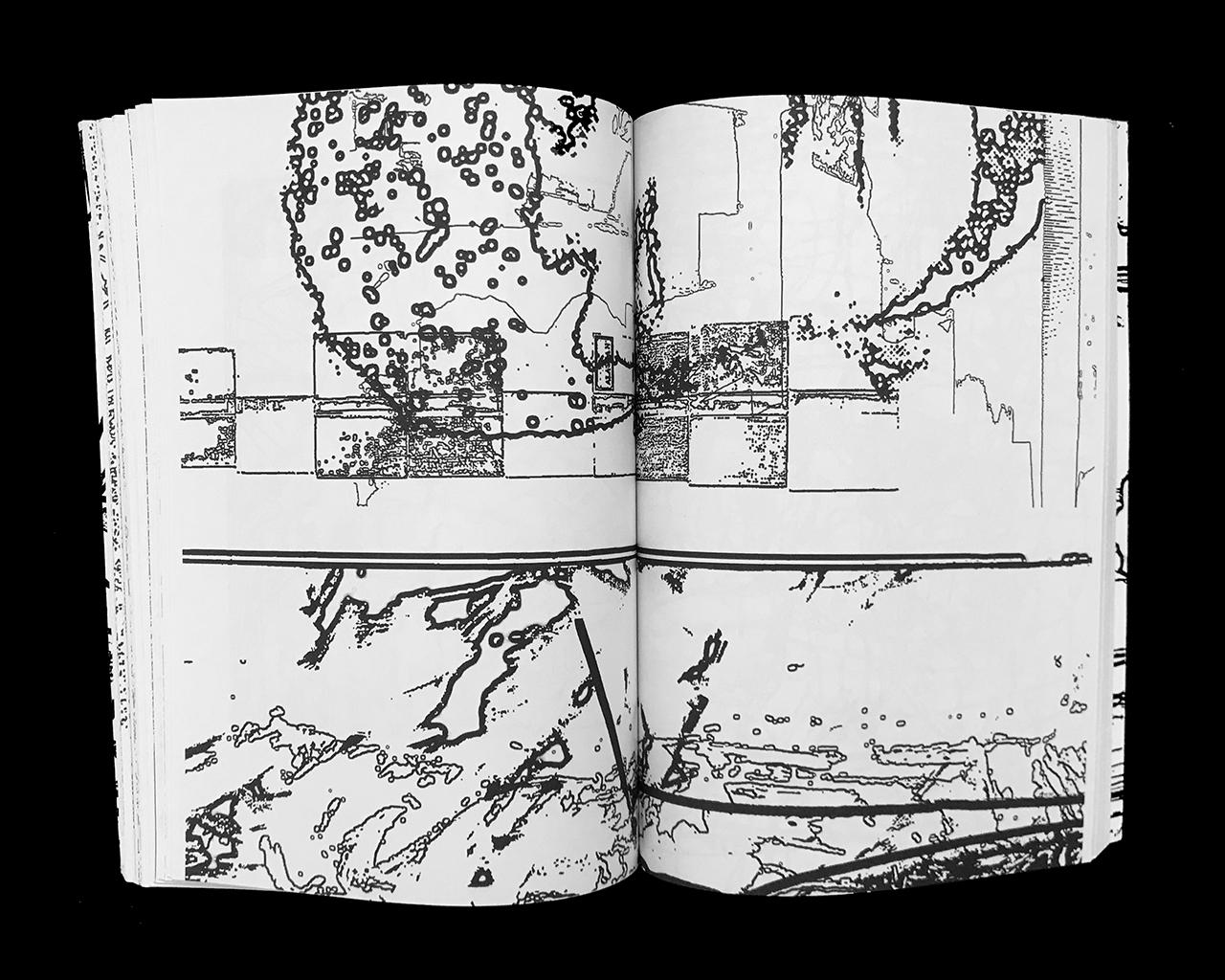
A book about transforming images into lines and patterns. Published in 2020 during the pandemic, we transformed a folder of images with paintings, photographs, maps, sculptures, screenshots and other findings into digital drawings that have been superimposed and reworked in the book layout. The drawings are accompained by the short story written by Jorges Luis Borges that gives the book its name. Borges’ essay is an attempt to convey the character of the man that William Shakespeare was as a human being from what little is known about this aspect of the Bard’s life.The writer is completely in awe by the genius of Shakespeare. But, in the end, he falls back on the fact that there is a lot to be said about the life of Shakespeare’s works, but not much to be said about Shakespeare himself. This fact is evident in the essay, as Borges represents Shakespeare as the face of many, but not the face of himself.
“There was no one inside him, nothing but a trace of chill, a dream dreamt by no one else behind the face that looks like no other face (even in the bad paintings of the period) and the abundant, whimsical, impassioned words. He started out assuming that everyone was just like him; the puzzlement of a friend to whom he had confided a little of his emptiness revealed his error and left him with the lasting impression that the individual should not diverge from the species.”
Everything and Nothing é uma publicação experimental que trata da transformação de imagens em linhas e padrões. Publicado em 2020, durante a pandemia, transformamos uma pasta de imagens com pinturas, fotografias, mapas, esculturas, capturas de tela e outros achados em desenhos digitais que foram sobrepostos e retrabalhados no layout do livro. Os desenhos são acompanhados pelo conto escrito por Jorges Luis Borges que dá nome ao livro. O ensaio de Borges é uma tentativa de transmitir o caráter do homem que William Shakespeare foi como ser humano, a partir do pouco que se sabe sobre esse aspecto da vida do bardo. Mas, no final, ele recai no fato de que há muito a ser dito sobre a vida das obras de Shakespeare, mas não há muito a ser dito sobre o próprio Shakespeare. Esse fato fica evidente no ensaio, pois Borges representa Shakespeare como o rosto de muitos, mas não o rosto de si mesmo.
"Não havia ninguém dentro dele, nada além de um traço de frio, um sonho sonhado por ninguém mais por trás do rosto que não se parece com nenhum outro rosto (mesmo nas pinturas ruins da época) e das palavras abundantes, caprichosas e apaixonadas. Ele começou supondo que todos eram iguais a ele; a perplexidade de um amigo a quem ele havia confidenciado um pouco de seu vazio revelou seu erro e o deixou com a impressão duradoura de que o indivíduo não deveria divergir da espécie."
Year: 2020
Edited by Romeu Silveira
14x21 cm, offset printing
on matte paper, 200 pages.
ISBN: 978-65-991687-2-7
Edited by Romeu Silveira
14x21 cm, offset printing
on matte paper, 200 pages.
ISBN: 978-65-991687-2-7
$20 USD
SOLD OUT
$60 BRL
SOLD OUT
SOLD OUT
$60 BRL
SOLD OUT




